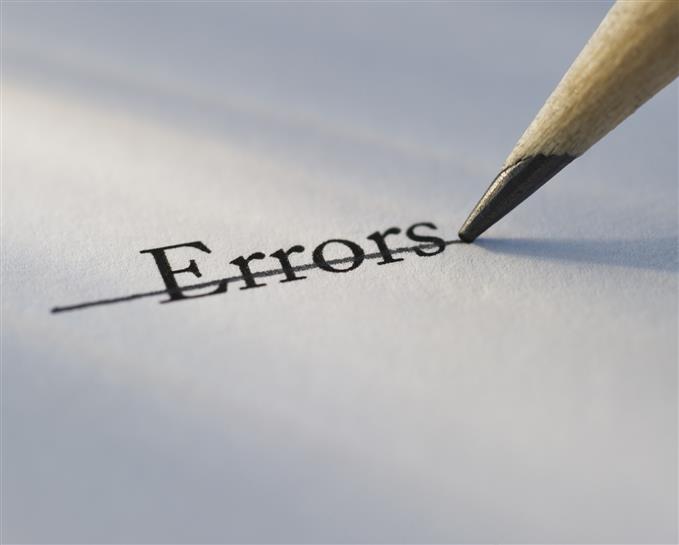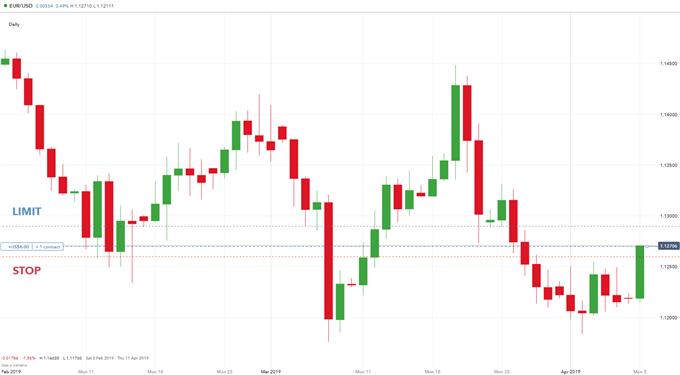Human error in the forex market is common and often leads to familiar trading mistakes. These trading mistakes crop up particularly with novice traders on a regular basis. Being aware of these errors, can help traders become more efficient in their forex trading. Although all traders make trading mistakes regardless of experience, understanding the logic behind these mistakes may limit the snowball effect of trading impediments. This article will outline the top ten trading mistakes and ways to overcome them. These mistakes are part of a constant learning process whereby traders need habitually familiarise themselves with them to avoid repeat wrongdoings.
The video included highlights six trading mistakes, however there will be more covered in the article below. It is important to note that trading comes with the inevitability of loss, but these may be minimised with the exclusion of human error/mistakes.
Prior to committing to forex trading, consider these 10 widespread trading mistakes you must evade as they contribute to a large proportion of unsuccessful trades.

MISTAKE 1: NO TRADING PLAN
Traders without a trading plan tend to be haphazard in their approach because there is no consistency in strategy. Trading strategies have predefined guidelines and approaches to every trade. This prevents traders from making irrational decisions due to adverse movements. Devoting to a trading strategy is key because veering away may lead to traders plunging themselves into unchartered territory with regards to trading style. This eventually results in trading mistakes due to unfamiliarity. Trading strategies should be tested on a demo account . Once traders are comfortable and understand the strategy, this can be translated to a live account.
MISTAKE 2: OVER-LEVERAGING
Margin/leverage refers to the use of loaned money to open forex positions. While this feature requires less personal capital per trade, the possibility of enhanced loss is real. The use of leverage magnifies gains and losses, so managing the amount of leverage is key. Learn more on what is leverage in the forex market.
Brokers play an important role in protecting their customers. Many brokers offer unnecessarily large leverage levels such as 1000:1 which puts novice and experienced traders at significant risk. Regulated brokers will cap leverage to appropriate levels guided by respected financial authorities. This should be taken into consideration when selecting a fitting broker.
MISTAKE 3: LACK OF TIME HORIZON
Time investment works hand in hand with the trading strategy being implemented. Each trading approach aligns itself to varying time horizons, therefore understanding the strategy will lead to gauging the estimated time frame used per trade. For example, a scalper will target shorter time frames whilst positions traders favour the longer time frames. Explore the forex strategies for varying time horizons.
MISTAKE 4: MINIMAL RESEARCH
Forex traders are required to invest in proper research to employ and execute a specific trading strategy. Studying the market as it should be, will bring light to market trends, timing of entry/exit points and fundamental influences as well. The more time dedicated to the market, the greater the understanding of the product itself. Within the forex market, there are subtle nuances between the different pairs and how they work. These differences need thorough examination to succeed in the market of choice.
Reacting to media and baseless advice should be avoided without verification from the employed strategy and analysis. This is a common occurrence with traders. This does not mean these tips and media releases should not be considered, but rather investigated systematically prior to acting on the information.
MISTAKE 5: POOR RISK-TO-REWARD RATIOS
Positive risk-to-reward ratios are often overlooked by traders which can result in poor risk management. A positive risk-to-reward ratio such as 1:2 refers to potential profit being double the potential loss on the trade. The chart below shows a long EUR/USD trade with a 1:2 risk-to-reward ratio. The trade was opened at a level of 1.12698 with a stop at 1.12598 (10 pips) and a limit of 1.12898 (20 pips). An effective indicator to help identify stop and limit levels in forex is the Average True Range (ATR) which uses market volatility to base entry and exit points.
Having a ratio in mind helps to manage expectations of traders, this is important because after much research by DailyFX, improper risk management has proven to be the number one mistake made by traders.
EUR/USD 1:2 risk-to-reward ratio:

MISTAKE 6: EMOTION BASED TRADING
Emotional trading often leads to irrational and unsuccessful trading. Traders frequently open additional positions after losing trades to compensate for the previous loss. These trades usually have no educational backing either technically or fundamentally. Trading plans are there to avoid this type of trading therefore, it is imperative that the plan is followed closely.
MISTAKE 7: INCONSISTENT TRADING SIZE
Trading size is crucial to every trading strategy. Many traders trade unsuitable sizes in relation to their account size. Risk then increases and could potentially erase account balances. DailyFX recommends risking a maximum of 2% of the total account size. For example, if the account contains $10,000 then a maximum of $200 of risk is suggested per trade. If traders observe this general rule, the pressure of overexposing the account will be removed. The inherent risk of overexposing the account on a particular market is extremely dangerous.
MISTAKE 8: TRADING ON NUMEROUS MARKETS
Trading on a few markets lets traders gain the necessary experience to become proficient at these markets without scratching the surface of a few markets. Many novice forex traders look to trade on multiple markets without success due to lack of understanding. This is something that should be done on a demo account if need be. Noise trading (irrational trading) often leads traders to place trades without the proper fundamental/technical justification on varying markets. For example, the Bitcoin craze of 2018 sucked in a lot of noise traders at the wrong time. Unfortunately, many traders entered at the ‘FOMO or Euphoria’ stage of the market cycle which resulted in significant losses.
MISTAKE 9: NOT REVIEWING TRADES
Frequent use of a trading journal will allow traders to identify possible strategic flaws along with successful facets. This will enhance the traders overall understanding of the market and strategy for future. Reviewing trades not only highlight errors, but beneficial aspects as well which must be reinforced on a constant basis.
MISTAKE 10: SELECTING AN UNSUITABLE BROKER
There are numerous CFD brokers globally, so choosing the right one can be difficult. Financial stability and proper regulation are essential before opening an account with a broker. This information should be readily available on the brokers website. Many brokers are regulated in countries where guidelines are weak, to circumvent regulations in stricter jurisdictions such as the US (Commodity Exchange Act) and the UK (FCA).
Safety is the primary focus; however, a comfortable platform and ease of execution is also central to choosing a broker. Becoming accustomed with the platform and costing should be given ample time prior to trading with live funds.







